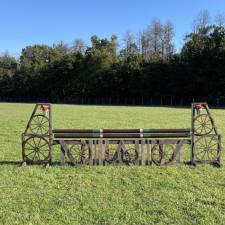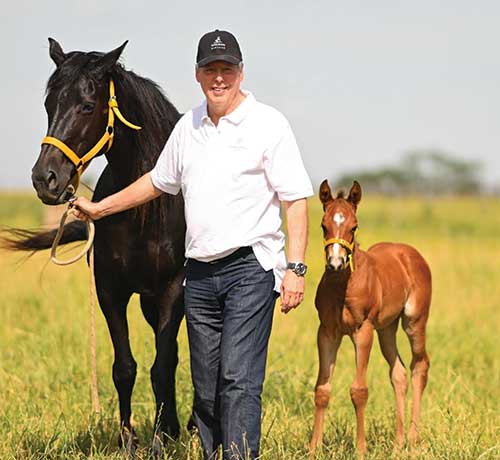
by Lucas Noel
Toward the end of last year, a news story that shook the breeding world was released. A laboratory announced a supposed milestone in equine biotechnology by disclosing the birth of five horses genetically edited using the CRISPRCas9 technique. The procedure involved using a small part of a gene from one mare and introducing it into another.
To do this, scientists alter the DNA by cutting out specific areas of the genome and removing, adding or replacing the area. This can be done to change physical traits and/or disease risks. The company that carried out the process is Kheiron, a firm that has already had world-scale achievements in its specialty of cloning high-performance horses. These results, which include the use of stem cells for cloning and a generation of the world’s first genetically edited embryos, have already been published.
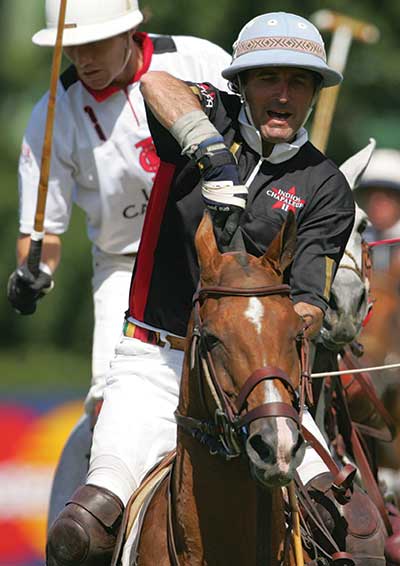
Photo credit: Sergio LLamera Archives
Its initial impact was enormous when it became known that important names in Argentine breeding were behind this initiative. Doña Sofia Polo and Alberto Pedro Heguy allowed the editing of DNA from Polo Pureza (High Host x Purita), the best mare of the 1993 Argentine Open and a member of the Argentine Polo Horse Breeders Association’s (AACCP, is the acronym in Spanish) Hall of Fame. The mare first played the Argentine Open at just 4 years old, much younger than most horses play at that level. Heguy said she was playing practices at 2½ years old.
Heguy’s 10-goal son Pepe played the horse for 14 polo seasons, usually two chukkers and sometimes a third. “Polo Pureza, here in Palermo, brings me incredible memories. ... She had an impressive head and a luxurious mouth,” Pepe Heguy said in an AACCP video. “It made me win the last [Argentine] Open that we won when no one thought we could. ... No one expected it and we ended up winning.
But, the last year, the truth was that Pureza gifted it to us. ... We had to play on Field 1 the semifinal against Cambiaso and on that day with Pureza, I scored four goals and we ended up winning by four goals.” His brother and teammate Eduardo “Ruso” Heguy remembers, “She had an impressive sensibility, resistant, she didn’t get tired. Perhaps she wasn’t the fastest. Pepe knew how to use her perfectly because of the anticipation. He was perfect for that mare, so it was a spectacular combination.”
Gene editing can potentially add speed to this mare’s clones. “The expectation is that Polo Pureza will acquire sprinter or explosion characteristics that she did not possess, while retaining her other qualities,” Alberto Pedro Heguy said. However, the controversy in the polo world was immediate: Is it a scientific breakthrough, like embryo transfer or cloning were at the time, or manipulation similar to the use of a performance enhancing substance?
In the first days of this year, the Argentine Polo Association was categorical on the issue: it is genetic doping.
“One of our purposes is to ensure conditions of equality and competitive transparency of all equines participating in the sport of polo, as well as to ensure compliance with regulations regarding the prevention of doping in equines, whether substances or methods, such as therapies and genetic editing not authorized at the international level, understanding that this is considered genetic doping in the world, and thus affects the industry and puts at risk the trade and export of equines,” read an official statement from the governing body of polo in Argentina.
“In that sense, it is ratified that temporarily and/or until the international context changes, the eventual use of manipulated or genetically edited horses will not be allowed by the AAP for the game of polo in any official or unofficial tournament, either in the AAP or in any associated club.”
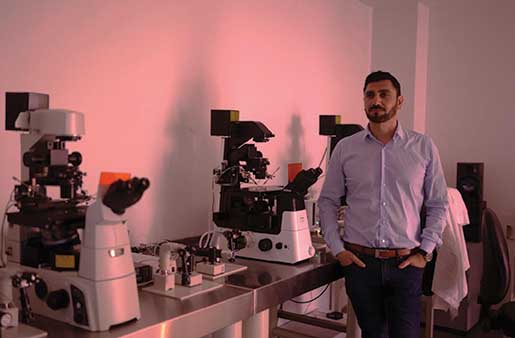
the foals are not considered genetically modified.
Kheiron’s scientific director, Gabriel Vichera, explained, “We design their genome before they are born. We do this by using the so-called genetic scissors techniques, which are molecular tools that allow us to go to any region of the genome, make a precise cut, and be able to make a change in that genome...
“This important scientific development was carried out in an extremely rigorous manner, complying with the strict requirements of the National Bioeconomy Directorate and the National Advisory Commission for Agricultural Biotechnology, the national biotechnology regulatory authority, so that it would not be considered a GMO (genetically modified organism), and therefore a specimen that could be found freely in nature, and thus it has just been approved.
“This was done precisely for this purpose, in order to comply with the regulations of the AACCP and the Argentine Rural Society (SRA, its acronym in Spanish), so that the specimen obtained is not considered to be genetically doping. It should be noted that Argentina is a world leader in the development of standards in this regard.”
According to the firm, the technique used seeks to identify genes that respond to a certain characteristic. In a single step, a specific gene can be introduced into an animal for a specific purpose. The company explained it changed the genes of Polo Pureza, as she did not have the explosiveness required in today’s competitions, and it added the gene of a sprinter, a horse known for more explosive power. “A lot of care was taken to comply with all the regulations so that the animal is considered a normal animal and can be released into the wild. What we are looking for is to have an ordinary animal and not have it confined,” said Daniel Sammartino, founder & CEO of Proinvesa Group and president of Kheiron.
Polo Pureza’s five clones were born within 15 days of each other and the scientists hope their characteristics will gradually find a place in the sport. “I think people will wait, as happened with cloning. Today there are many clones, but at the beginning there were many doubts. As long as genes with certain characteristics can be identified, we will have to see and study what other attributes are associated with this gene. This is the beginning of a journey,” Sammartino added.
Such gene-editing projects have been carried out for some time in biotech, both in cattle and pigs. The proposal to make modifications in pigs aims to make their organs compatible for human transplants, and in cows to increase their protein content or to make their hair shorter and make them more resistant to thermal stress.
Beyond Kheiron’s explanations, many of the most prominent names in Argentine breeding immediately objected, including Ellerstina SA, Javier Tanoira, Bartolomé Castagnola, Matías and Pablo Mac Donough, Hilario Ulloa, Delfín Uranga, Guillermo Caset Jr., Santiago Chavanne, José Chediack, Marcos Di Paola, Alex and Patricio Garrahan, Marcos Heguy, Juan Cruz Magrini, Cecilia Pieres, Lucas James and Curtis Pilot.
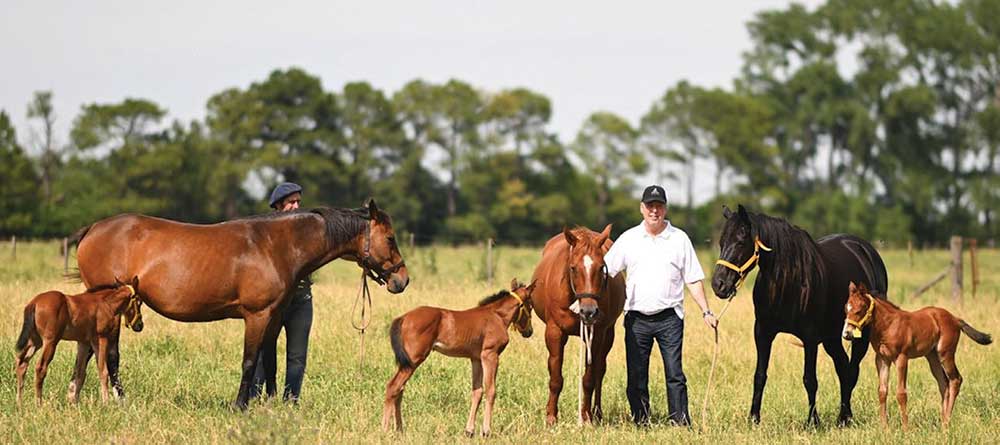
These polo breeders and others signed a letter addressed to Santiago Ballester, president of the AACCP, requesting that the genealogical records department of the SRA refrain from registering any specimen resulting from this genetic manipulation in the Polo Argentino breed, so as not to have to submit to any legal contingency in the future.
The AACCP replied, “Genetic editing is detectable only if it is known in advance and the original genetic material is compared with the edited organism. It is a powerful tool in human medicine research, with limitations in practical applications in veterinary medicine. The AACCP will study the feasibility of this process, for the sake of animal welfare, sporting fairness and for the benefit of the breed and the sport.”
To Tanoira, this response seemed insufficient. “Genetic editing is considered a genetic modification in most first world countries, therefore, animals obtained by this technique are considered GMOs and, not only will they be unable to compete in any sporting activity in those countries, but most likely, they will not even be allowed to enter their territory. Not them and all their progeny, that is their children, grandchildren, great-grandchildren, and great-great-grandchildren.
“I wonder what Alberto Pedro Heguy would have said if the Kheiron people had warned him of this little detail before agreeing to make his mare’s stem cells available for this experiment. I wonder what he will say now, when the chances are that these five clones will not only never be exported, but will never be allowed to play on a polo field in any country in the world. If the day comes when these practices are approved in the world, well, we will all sit around the table and evaluate the pros and cons and decide together what is best. But, for now, we can do nothing, but stand behind the AAP and its decision. There is a lot at stake. The foreign trade of polo horses will be cut off and polo will disappear, first in Argentina, and then in the world.”
Many specialists in his country agree with Tanoira. Dr. Marcela Martínez, deputy head of the Applied Genetics Laboratory of the SRA, said, “Gene editing is not a 100% safe technique, as it has so-called off-target edits that can cause many complications for these animals and all their progeny in the future.
“Contrary to what the AACCP maintains, it is possible to detect this editing with the equipment that the SRA has today. Gene editing is considered a genetic modification in most countries in the world, including the USA and the European Union, and animals that practice a sporting activity and have this modification would be committing genetic doping.”
Tanoira added, “This is not new. This laboratory had already obtained embryos with this technique in 2018, they had already announced it, they had already faced resistance from the AACCP, they already had to sign an affidavit at the Secretariat of Agriculture saying that these embryos were not going to be implanted, they had already had a complaint from a horse exporting company saying that this practice put at risk the export of horses of all breeds, and the AACCP itself, in a statement posted on its Instagram on Jan. 10, 2018, openly stated its opposition to this practice. “I wonder what happened between then and now: did anything change, was gene editing approved worldwide, was it no longer considered genetic doping? As far as I know, nothing has changed.”
In the land where the best polo in the world is played, a new controversy has arisen, dividing those who consider genetic editing to be a revolutionary technological advance in the world of breeding and those who see it as bending the laws of equality of conditions and competitiveness. Where everyone does agree, is that we are undoubtedly only at the initial feet of a long and contentious mile-long journey in the advancement of the genetic universe.
This article is reprinted with permission from Polo Magazine ©.
You can find more interesting articles in our section on Health & Education and Riding Disciplines. While you're here be sure to look around our Curated Amazon Store.







